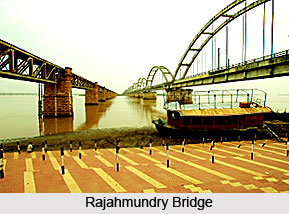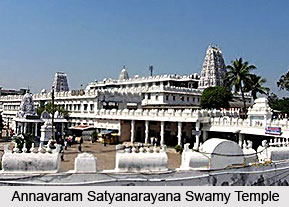 The East Godavari District is located towards the northern coast of Andhra Pradesh. This district is also known as the `rice bowl` of Andhra Pradesh because of its lush green paddy fields. The district headquarter of East Godavari is Kakinada. The district was formed in the year 1925 when the old Godavari district was divided into two parts namely the east and the west.
The East Godavari District is located towards the northern coast of Andhra Pradesh. This district is also known as the `rice bowl` of Andhra Pradesh because of its lush green paddy fields. The district headquarter of East Godavari is Kakinada. The district was formed in the year 1925 when the old Godavari district was divided into two parts namely the east and the west.
History of East Godavari
Just as the remaining parts of Deccan were under the rule of the Nandas and the Maurya dynasty, similarly the administration of the East Godavari district was also under the Mauryas during the ancient years. After being ruled by several dynasties including the Satavahanas, the Pallavas, the Kakatiyas, the Delhi Sultanate and the Muslim Rulers, the East Godavari district finally was captured by the British in 1768. As India attained independence in 1947, the Madras Presidency of the British government was converted to Madras state and along with it the Godavari district became a part of the state of Andhra Pradesh.
Geography of East Godavari
East Godavari district forms a large part of the delta region of Godavari River. The district is placed towards the northern part of Andhra Pradesh. It has been divided into 60 mandals. The latitudinal boundaries of the district are 16.30 degrees to 18 degrees north and the longitudinal boundaries are 81.30 degrees to 82.30 degrees east longitude. East Godavari is bounded by Vishakapatnam in the north, Orissa in the east, Bay of Bengal in the south and it is bounded by Khammam and West Godavari districts in the west. The total area covered by the district is around 10807 square kilometers. The important rivers of the district are River Godavari, River Pampa, River Thandava and River Yeleru. The climate of the region is generally of a moderate variety but in the months of April the temperature rises as high as 48 degrees centigrade. The rainfall in the district measures 1280.0 mm. The rain which is received by East Godavari is mainly from the south-western and the north-eastern monsoon in the months of June to September and October-November. The climate of the East Godavari districts assists coconut plantation in the district.
 Tourism in East Godavari
Tourism in East Godavari
The East Godavari district is a notable place of tourist attraction. The district has a wonderful blend of nature as well as heritage. Some of the important places of tourist attraction in the East Godavari district are Adurru, which is mainly a Buddhist centre, Annavaram Satyanarayana Swamy Temple, Sri Lakshmi Narasimha Swamy Temple at Antarvedi, the Papikonda wild life Santuaries and the Rajahmundry Bridge. Apart from these well known tourist destinations there are also other places which attract the tourists to visit the district of East Godavari.
Economy of East Godavari
Coconut Plantation is a major source of subsistence for the people belonging to the district of East Godavari. In order to use natural resources to enhance economy of the district, the Andhra Pradesh has employed a large number of females in the `Coir Project`. Maximum number of people in the East Godavari district earns their living from the Andhra Paper Mill, the Godavari and Nagarjuna Fertilizers, the Plywood unit at Rampachodavaram, Sugar factories at Samarlakota and people are also engaged with a number of dairies, hatcheries, piggary farms, fisheries, spinning and saw mills. The handicraft industry is also well flourished in East Godavari. Bell metal crafts are a common handicraft industry of the district. Some other small scale industries which have flourished in the district of East Godavari are the making of musical instruments.
The East Godavari district of Andhra Pradesh is known as the land of poignant bhajans, tweeting birds and gurgling streams. Thus it can be said that the district is a close blend of religiosity which is culminated with the help of nature.






